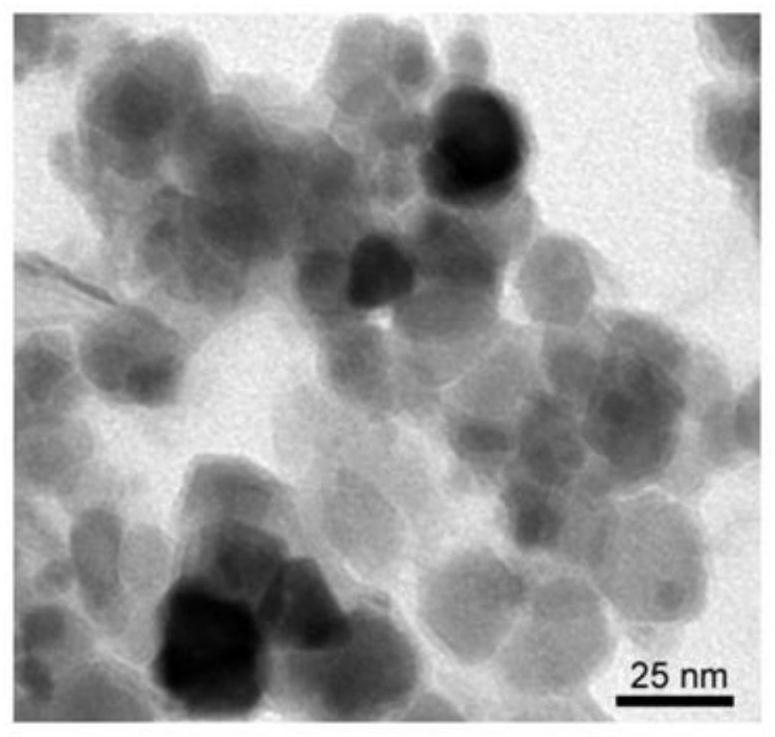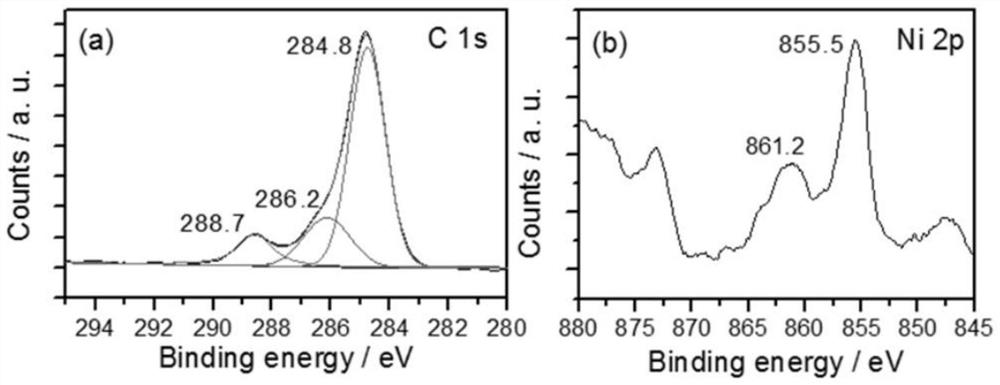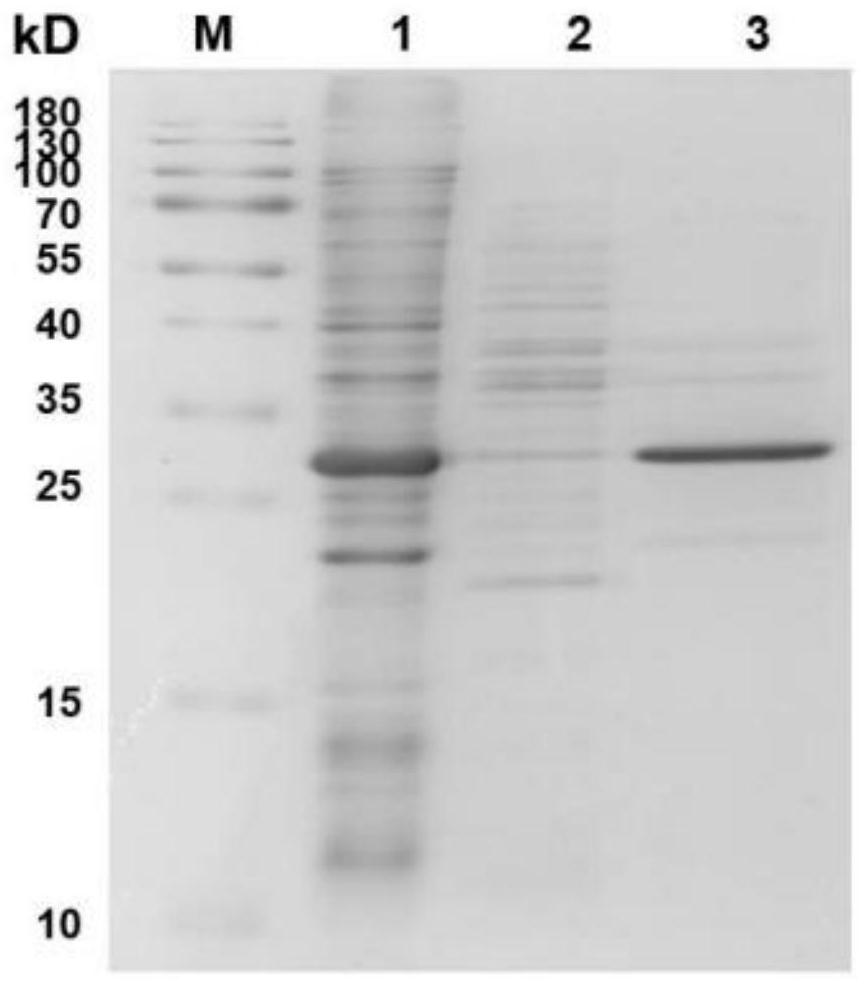Nickel-chelated magnetic nanoparticle and preparation method thereof, and application of nickel-chelated magnetic nanoparticle in separation and purification of histidine tag protein
A technology of magnetic nanoparticles and histidine tags, which is applied in the field of materials, can solve the problems of cumbersome operation, falling off of nickel ions, and expensive modified ligands, and achieves the advantages of simple separation and purification process, simple modification reaction, and high reuse rate. Effect
- Summary
- Abstract
- Description
- Claims
- Application Information
AI Technical Summary
Problems solved by technology
Method used
Image
Examples
Embodiment 1
[0030] The preparation of embodiment 1 nickel-SB magnetic nanoparticles
[0031] The preparation method comprises the following steps:
[0032] (1) The ferroferric oxide magnetic nanoparticles are prepared by co-precipitation method, and are dispersed in deionized aqueous solution for storage. Take 10mL of this solution (about 30mg of ferroferric oxide magnetic nanoparticles) in a beaker, add 0.50g of sodium hydrogen tartrate powder, stir to dissolve it gradually, ultrasonic at room temperature for more than 4h, then carry out magnetic adsorption separation, remove the supernatant, add Washing with deionized water was repeated 5 times to remove uncoated sodium hydrogen tartrate, and finally obtained ferric iron tetroxide magnetic nanoparticles wrapped by sodium hydrogen tartrate.
[0033] (2) The above magnetic nanoparticles are dispersed in 10mL deionized water, and 0.10mol L -1 NaOH solution, so that the pH of the solution reaches between 9.0-10.0 to ensure that the carbox...
Embodiment 2
[0037] The application of embodiment 2 nickel-SB magnetic nanoparticles
[0038] The method for separating and purifying histidine-tagged recombinant protein from complex Escherichia coli lysate with nickel-SB magnetic nanoparticles, the specific steps are as follows:
[0039] (1) Escherichia coli expressing six histidine-tagged recombinant proteins were induced to express by isopropyl-β-D-1-thiogalactoside, and the bacterial liquid was collected, and the protein extraction and lysate were added, followed by ultrasonic disruption , after high-speed centrifugation, the supernatant was obtained as the total protein solution of E. coli.
[0040] (2) Take 200 μL of nickel-SB magnetic nanoparticles (2 mg / mL) for magnetic separation on a magnetic stand, discard the supernatant, add 300 μL of the above bacterial total protein solution, resuspend the nanoparticles, rotate at 4 °C for 1 h, and magnetically Separation, the supernatant is the supernatant solution after magnetic material...
Embodiment 3
[0046] The determination of the maximum binding capacity of embodiment 3 nickel-SB magnetic nanoparticles
[0047] Specific steps are as follows:
[0048] Take 50 μg of nickel-SB magnetic nanoparticles and different concentrations of purified histidine-tagged carbonic anhydrase protein solutions and incubate at 4°C for 1 hour with rotation. After magnetic separation, the unbound carbonic anhydrase in the supernatant solution is determined by Bradford method protein concentration.
[0049] The adsorption capacity of Ni-SB magnetic nanoparticles (Q e , mg g -1 ) is calculated by formula (1).
[0050]
[0051] where C 0 (mg mL -1 ) is the initial concentration of carbonic anhydrase, C s (mg mL -1 ) is the protein concentration in the supernatant solution after adsorption, V (mL) is the volume of the protein solution, and m (g) is the mass of the magnetic material.
[0052] The adsorption isotherm conforms to the Langmuir model, and the saturated adsorption capacity Q i...
PUM
 Login to View More
Login to View More Abstract
Description
Claims
Application Information
 Login to View More
Login to View More - R&D
- Intellectual Property
- Life Sciences
- Materials
- Tech Scout
- Unparalleled Data Quality
- Higher Quality Content
- 60% Fewer Hallucinations
Browse by: Latest US Patents, China's latest patents, Technical Efficacy Thesaurus, Application Domain, Technology Topic, Popular Technical Reports.
© 2025 PatSnap. All rights reserved.Legal|Privacy policy|Modern Slavery Act Transparency Statement|Sitemap|About US| Contact US: help@patsnap.com



